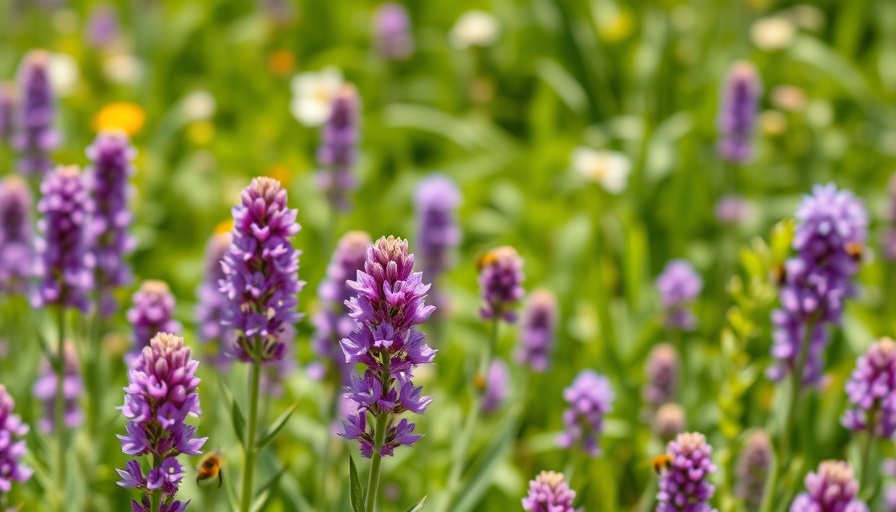
Unlock the Wonders of Hyssop: A Kitchen Superstar and Garden Must-Have
Hyssop (Hyssopus officinalis) is not just your average herb; it’s a powerhouse in the kitchen, an attractive addition to your garden, and a friend to beneficial pollinators. This resilient plant is native to the Mediterranean region and has naturally adapted to thrive across North America, showcasing its remarkable versatility. If you’re a gardening enthusiast or simply someone who enjoys culinary adventures, adding hyssop to your garden is a decision you won’t regret.
Growing Hyssop: Everything You Need to Know
Hyssop is categorized as a hardy herbaceous perennial that flourishes best in USDA hardiness zones 4-9. It typically reaches a mature height of 1-2 feet and spreads around 1-1.5 feet wide. It can be planted in full sun or part shade and prefers sandy to loamy, well-draining soil with a pH of 6.5-8.5.
When cultivating hyssop, you can expect a growth period of approximately 75-85 days. Whether you're starting from seeds or transplants, ensure that seeds are sown 1/4 inch deep or plant transplants at the depth of their root ball. Spacing your hyssop plants about 6 inches apart will encourage healthy growth.
The Cultivars of Hyssop: Which One to Choose?
Hyssop offers various cultivars, each with unique traits and flavors. Some popular varieties include:
- Common Hyssop (H. officinalis): The classic choice for culinary and medicinal uses.
- Blue Hyssop: Known for its striking blue flowers, this variety attracts pollinators while providing medicinal qualities.
- Variegated Hyssop: Offering colorful foliage, it's also a beautiful ornamental plant.
Crafting Hyssop Tea: A Timeless Remedy
Hyssop leaves and flowers can be harvested to create a delightful tea that's known for its soothing properties. A strong brew sweetened with honey boasts a rich history in herbal medicine, traditionally used to alleviate throat and lung ailments. Incorporating hyssop tea into your wellness routine can provide relief and enhance your health naturally.
Gardening Hacks: Keeping Pests at Bay
One of hyssop’s primary advantages is its pest-resistant nature. Its aromatic oils deter common garden pests, making it an excellent companion plant. You can pair hyssop with vegetables and fruit trees to create a natural barrier without the use of synthetic pesticides, ultimately promoting a healthier garden ecosystem.
A Floral Feast for Pollinators
Hyssop is not only a culinary herb but also a haven for pollinators. Its vibrant flowers bloom from spring to fall, attracting bees, butterflies, and birds. By incorporating hyssop into your flower gardening, you contribute to the preservation of beneficial insects, which play a crucial role in maintaining our ecosystem’s balance.
Harvesting and Using Hyssop: From Backyard to Kitchen
The harvesting process for hyssop is simple. Cut leaves and flowers as needed throughout the growing season, remembering that the oils are strongest just before blooming. Fresh hyssop can elevate your culinary creations, enhancing everything from salads to roasted meats. Its robust flavor can transform ordinary dishes into extraordinary meals, allowing you to explore new culinary boundaries.
Conclusion: Your Invitation to Grow and Enjoy Hyssop
Adding hyssop to your garden offers not only aesthetic beauty and ecological benefits but also a gateway to enhanced culinary experiences. So why not take the plunge? Start your journey with hyssop today, and enjoy the rewards as your backyard transforms into a lush, productive sanctuary. Whether you’re a seasoned gardener or a first-timer, embracing hyssop serves as a fantastic introduction to the world of DIY gardening projects.
Ready to nurture your green thumb? Start growing hyssop and discover its many benefits for your garden and kitchen!
 Add Row
Add Row  Add
Add 




 Add Row
Add Row  Add
Add 

Write A Comment